- The Psychology Behind Storytelling and Sales Purchases
- Storytelling Techniques Used by Top Sales Copywriters
- The Benefits of Using Storytelling and Copywriting in Sales Emails
- Storytelling and Copywriting for Sales: Best Practices and Success Stories
- How to Use Storytelling to Build Brand Loyalty and Increase Sales
- The Dos and Don’ts of Storytelling for Copywriting in Sales
- How to Measure the ROI of Storytelling in Sales Copy
- The Importance of Incorporating Storytelling in Product Descriptions for Sales
- Tips for Crafting Persuasive Sales Pitches with Storytelling and Copywriting
- Conclusion

As marketers, our ultimate goal is to drive sales. With the rise of digital marketing, storytelling and copywriting has become an essential skill in the modern business world. Copywriting is the art of writing marketing materials that persuade people to take a specific action, such as making a purchase. A great copywriter can take a boring product and make it sound exciting, making people click that “Buy Now” button.
One of the most effective ways to make your copywriting stand out is through storytelling. Storytelling helps create a connection between the reader and the product or service being sold. By weaving a narrative around your product, you can create an emotional connection that makes people want to buy. In this blog post, we’ll dive into how you can use storytelling and copywriting to drive sales and take your business to new heights.
The Psychology Behind Storytelling and Sales Purchases
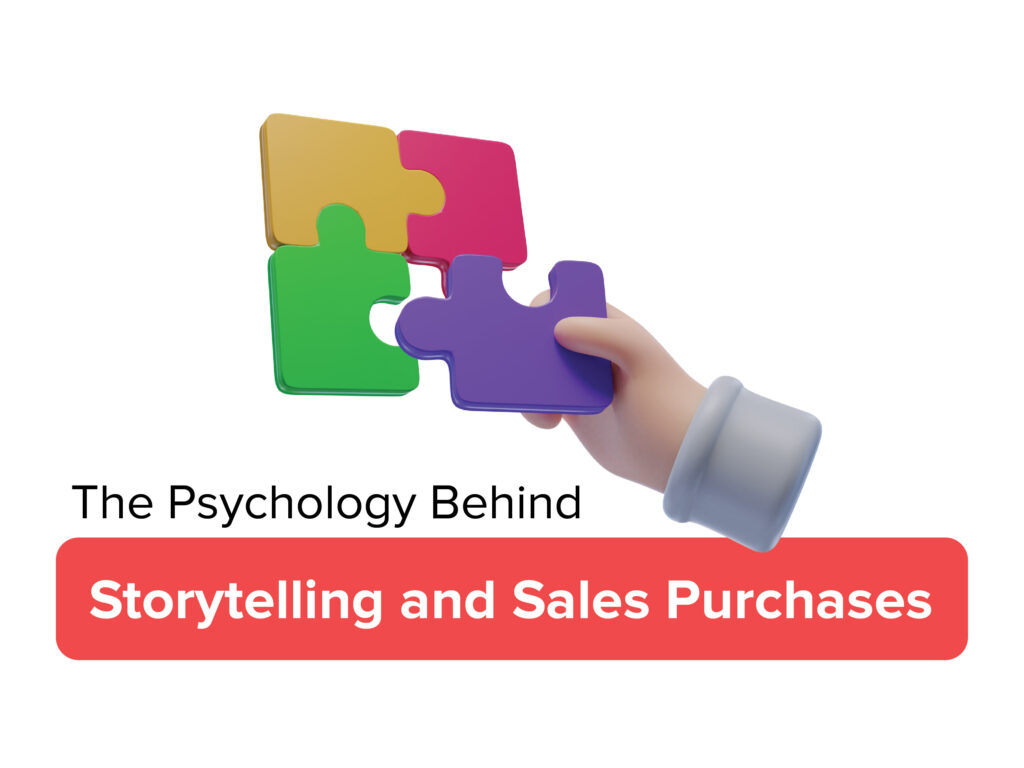
Storytelling is an effective tool for marketers because it taps into our emotions. When we hear a good story, we feel an emotional connection to the characters and the plot. This emotional connection makes us more likely to remember the story and take action based on it. Here are some psychological principles to keep in mind when crafting your brand’s story:
- The power of empathy: Empathy is the ability to understand and share in another person’s feelings. When you create a narrative that evokes empathy, you’re more likely to connect with your audience on a deeper level.
- The hero’s journey: The hero’s journey is a narrative structure present in many myths and stories. In this structure, a hero embarks on a journey, faces challenges, and emerges victorious. By incorporating the hero’s journey into your brand’s story, you can create a compelling narrative that drives engagement.
- The power of nostalgia: People often feel nostalgic for a simpler time or a bygone era. By incorporating nostalgic elements into your story, you can create a sense of longing that drives engagement.
- The need for closure: Humans are wired to seek closure. When you create a story with a clear beginning, middle, and end, you satisfy this need for closure and leave your audience satisfied.
Storytelling Techniques Used by Top Sales Copywriters
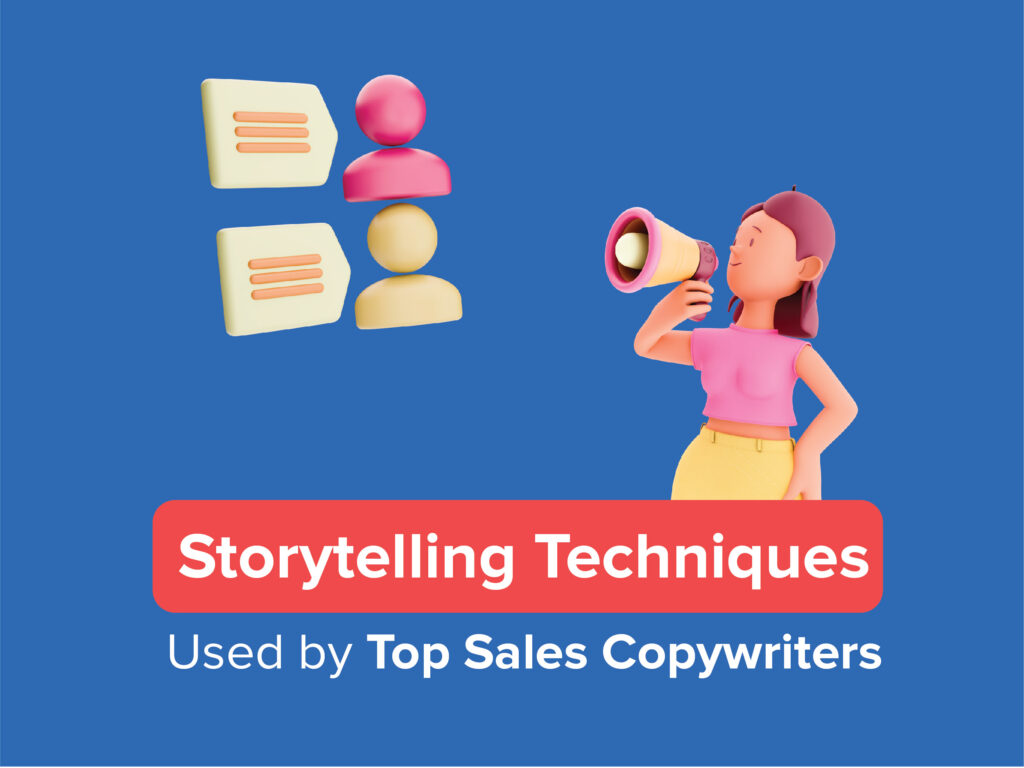
Now that we’ve discussed the psychology behind storytelling, let’s dive into some storytelling techniques used by top sales copywriters. These techniques will help you create powerful narratives that resonate with your audience and drive sales:
- Use a hook: A hook is a statement that captures your audience’s attention and makes them want to keep reading. A good hook is short, memorable, and creates curiosity. For example, “Are You Making These Common Mistakes When Buying a Car?”
- Develop a narrative structure: Every story has a beginning, middle, and end. Start by establishing your brand’s backstory, present the problem your product solves, and end with a successful outcome. This narrative structure makes your story easy to follow and engage with.
- Use sensory language: By incorporating sensory language into your story, you help your audience visualize the scenes and situations in your story. This makes your story more compelling and memorable.
- Create emotional resonance: Emotional resonance is when your story taps into your audience’s emotions and creates a deep sense of connection. Emotions motivate people to take action, so incorporating emotional resonance into your story is key to driving sales.
The Benefits of Using Storytelling and Copywriting in Sales Emails
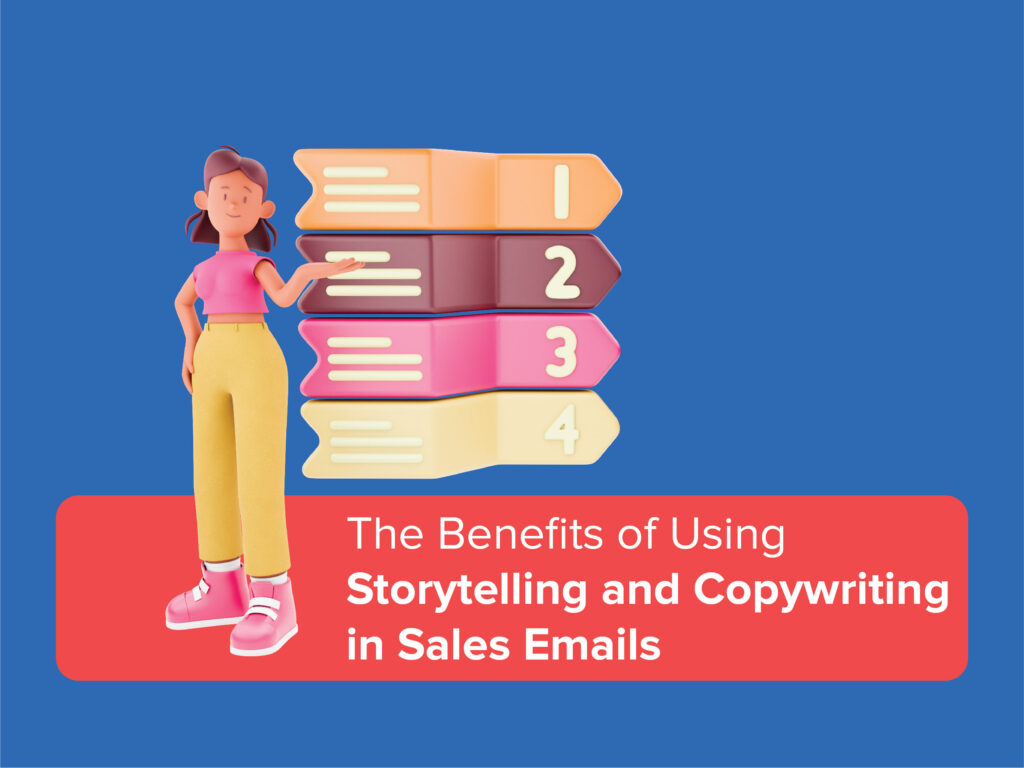
Sales emails are an essential tool in any marketer’s toolkit. However, with so many emails vying for our attention, it’s crucial to create email copy that stands out. Here are some benefits of using storytelling and copywriting in your sales emails:
- Stand out from the competition: By incorporating storytelling into your email copy, you create a unique and memorable experience for your audience.
- Build trust: By telling a story that resonates with your audience, you establish trust and credibility with them.
- Increase engagement: Storytelling makes your email copy more engaging, increasing the chances that your audience will take the desired action.
- Drive sales: Ultimately, the main goal of your sales emails is to drive sales. By using storytelling and copywriting, you can create email copy that persuades people to take that next step.
Storytelling and Copywriting for Sales: Best Practices and Success Stories

Successful businesses have been using storytelling and copywriting to drive sales for years. In fact, some of the most well-known and beloved brands in the world, like Coca-Cola, Apple, and Nike are recognized for their exceptional storytelling and copywriting skills.
When it comes to storytelling and copywriting for sales, there are a few best practices to follow. The first step is to understand your audience. Who are they? What do they care about? What challenges do they face? This information will help you craft a story and messaging that resonates with them.
The next step is to create a compelling narrative. A good story has a beginning, middle, and end, and takes the reader or listener on a journey. Whether it’s a story about your brand’s origins, a customer success story, or a tale of overcoming challenges, the story should be engaging and impactful.
Another important element to consider is the tone and voice of your messaging. It should be consistent across all channels and align with your brand values. For example, if your brand is known for its humor, your messaging should reflect that. Consistency is key in establishing a strong brand identity and building trust with your audience.
One success story to look at is Airbnb. They’ve built an entire brand around storytelling. Their “Belong Anywhere” campaign is all about sharing the unique stories of global users, and the ways in which Airbnb helped them find a sense of belonging in new places. By focusing on the human element, rather than just the product, Airbnb has developed a strong, memorable brand identity.
How to Use Storytelling to Build Brand Loyalty and Increase Sales
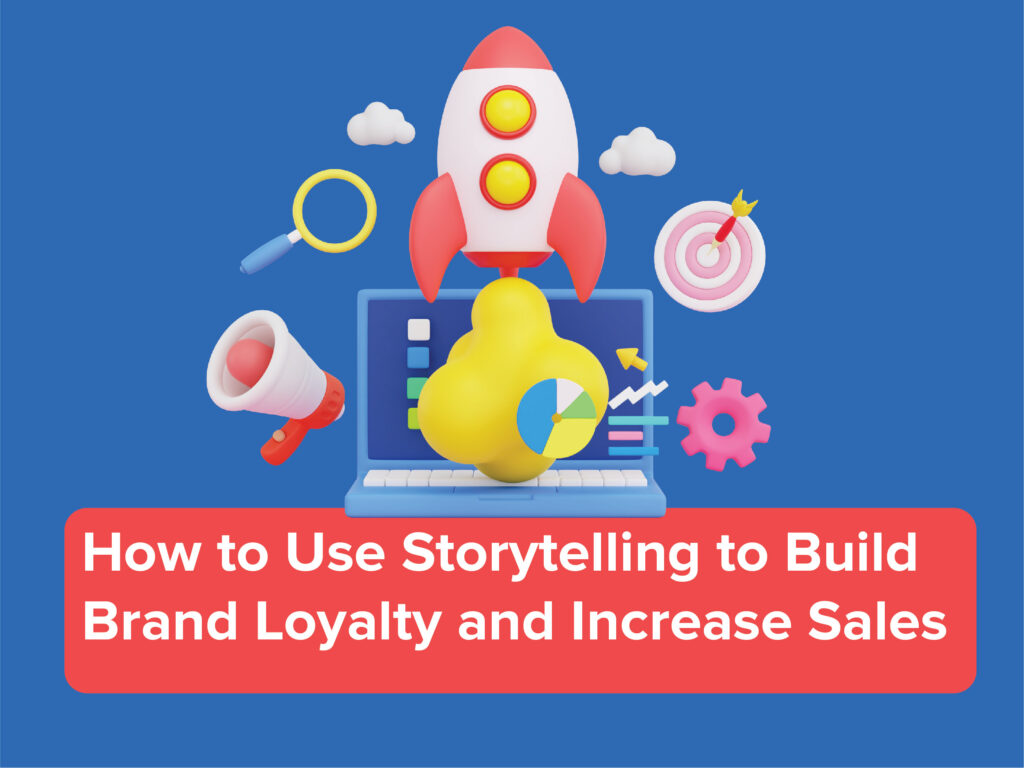
Storytelling can be a powerful tool for building brand loyalty and driving sales. By creating an emotional connection with your audience, you’re more likely to develop a strong relationship and turn customers into loyal fans.
One way to use storytelling for brand loyalty is to focus on your brand’s values and mission. What does your brand stand for? What are your goals? Share how your brand is making a difference in the world, and highlight the ways in which your customers are a part of that mission.
Another tactic is to use customer success stories to illustrate how your product or service has made a difference in their lives. Highlighting real-life examples of how your brand has helped customers overcome challenges and achieve their goals can help build trust and credibility with your audience.
Additionally, consider using storytelling in your email marketing campaigns to drive sales. Rather than simply promoting a product or sale, create a story that ties into the product. For example, if you’re selling outdoor gear, share a story about a customer who went on an incredible adventure using your gear. By tying in emotional connection, you’ll be more likely to convert leads into sales.
A great brand example that uses storytelling to build brand loyalty and increase sales is Patagonia. Their brand mission aligns with environmental activism, and their storytelling often focuses on the ways in which their products can help protect the planet. By tying their products to a larger mission, they’re able to create a loyal customer base that values environmentalism and quality products.
The Dos and Don’ts of Storytelling for Copywriting in Sales
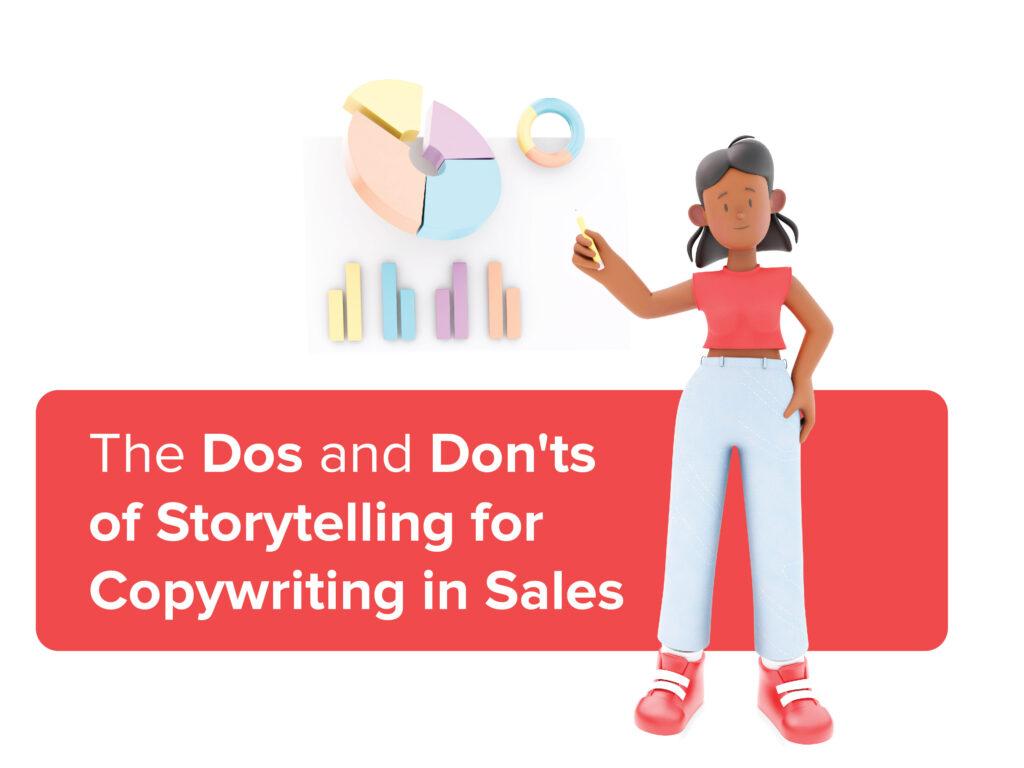
While storytelling and copywriting can be powerful tools, there are some common mistakes to avoid.
First, don’t start with a sales pitch. Your audience will quickly tune out if they feel like they’re being sold to right from the beginning. Instead, start with a compelling story that draws them in and engages them emotionally.
Second, don’t make your story too long or convoluted. Keep it simple and focused, with a clear beginning, middle, and end.
Third, don’t forget to focus on the benefits for the customer. Your story should illustrate how your product or service can solve a problem or help them achieve their goals.
On the other hand, do make sure your storytelling and copywriting is authentic and aligns with your brand values. It should be clear what your brand stands for and what audiences can expect from you.
Do also experiment and test different tactics. Be creative and willing to take risks in your storytelling and copywriting. You never know what might resonate with your audience until you test it out.
How to Measure the ROI of Storytelling in Sales Copy
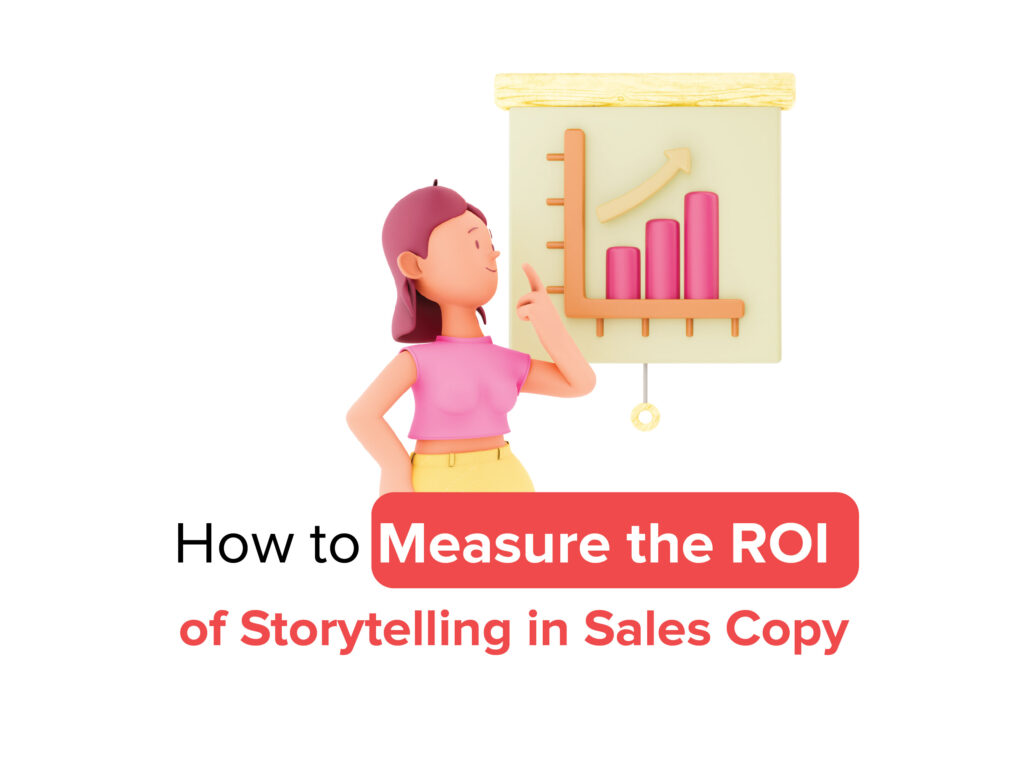
When it comes to marketing, it’s always important to measure the return on investment (ROI) of your efforts. Storytelling is no different. It’s essential to track if your stories are resonating with your audience and driving sales. Some metrics to consider when measuring the ROI of your storytelling efforts include:
- Conversion rate: One of the most crucial metrics to track is your conversion rate. This tracks the number of people who take the desired action, such as making a purchase, after reading your copy. By monitoring your conversion rate, you can see if your storytelling efforts are resonating with your audience.
- Time on page: If people spend more time on your website, it’s an indication that they’re engaged in your content. By monitoring how long people spend on your product pages, you can understand if your storytelling is compelling enough to keep people engaged.
- Social media engagement: If people are sharing your content, it’s a good sign that your storytelling is resonating with your audience. By tracking the number of shares, likes, and comments on social media, you can see if your message is spreading.
- Sales: Ultimately, the most crucial metric to track is sales. If your storytelling efforts are driving sales, then you know you’re on the right track.
The Importance of Incorporating Storytelling in Product Descriptions for Sales
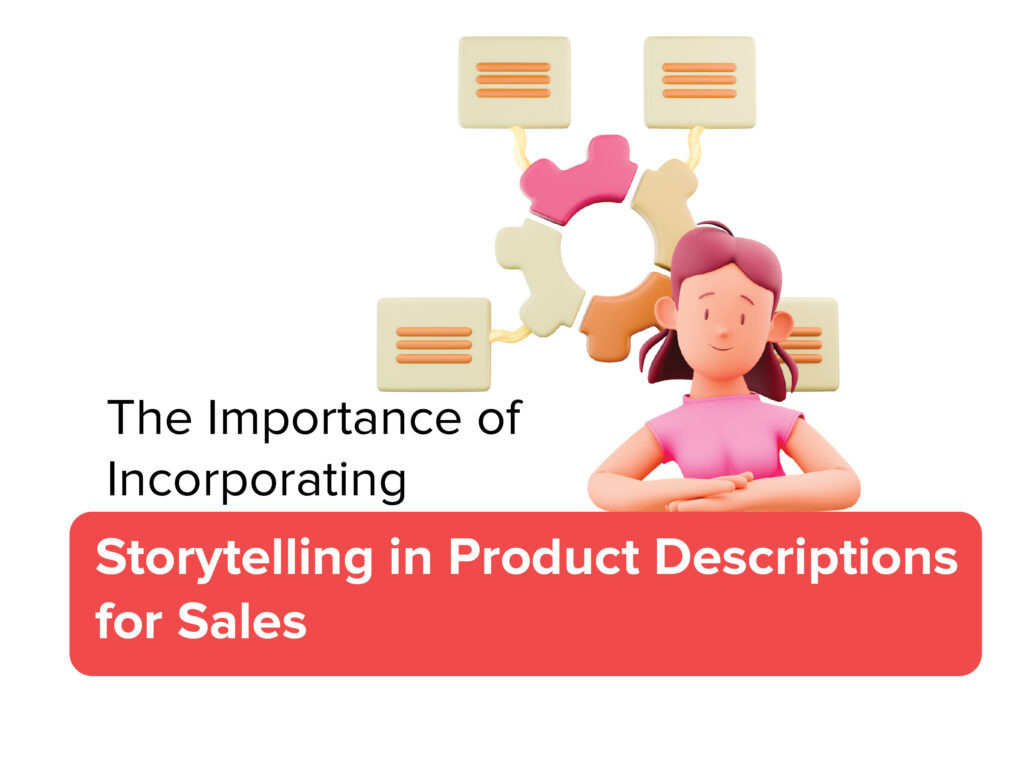
Storytelling has been used to communicate information, values, and ideas for thousands of years. It allows us to connect with others on a personal level and engage with ideas in a way that is memorable and relatable. In the world of sales, storytelling can be used to convey the value and unique benefits of a product or service in a way that resonates with potential customers.
One of the most important aspects of incorporating storytelling into your product descriptions is identifying and communicating the key benefits of your offering. By telling a story that highlights how your product or service can solve a problem or improve someone’s life, you can create an emotional connection with your audience that is much more compelling than simply listing out features and benefits.
For example, let’s say you are selling a high-end coffee maker. Instead of simply listing its features (e.g. programmable brewing, customizable settings), you could tell a story about a busy professional who struggled to find time to enjoy a quality cup of coffee each morning. By highlighting how your coffee maker can help them save time and enjoy a delicious cup of coffee without leaving the house, you can tap into the emotional needs of your potential customer and create a more powerful connection.
In addition to creating an emotional connection, storytelling can also help to differentiate your product or service from the competition. By telling a story that highlights how your offering is unique and different from others in the market, you can position yourself as the clear choice for potential customers who are looking for something special.
Tips for Crafting Persuasive Sales Pitches with Storytelling and Copywriting
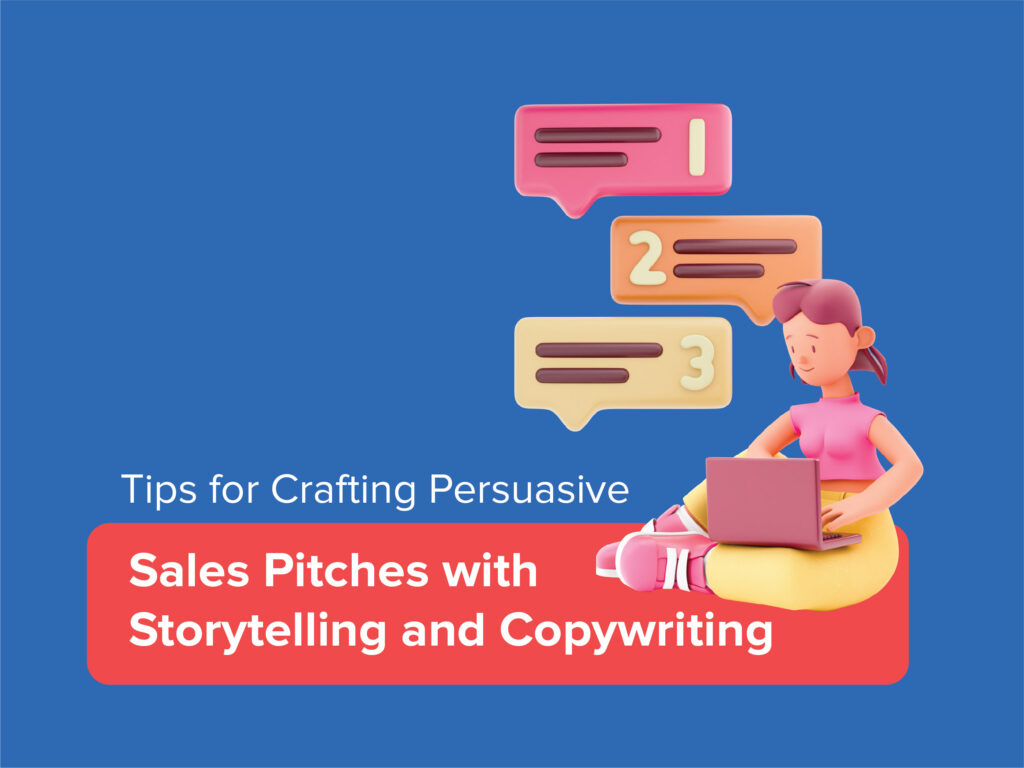
Now that we’ve covered the importance of incorporating storytelling into your product descriptions for sales, let’s dive into some tips for crafting persuasive sales pitches with storytelling and copywriting:
- Know Your Audience
One of the most critical aspects of effective storytelling and copywriting is knowing your audience. This means understanding who they are, what they need, and what motivates them to take action. By crafting a story that resonates with your target audience, you can create a more powerful emotional connection and increase the likelihood of making a sale.
To understand your audience, consider conducting market research or creating customer personas that represent key segments of your target market. Use this information to tailor your messaging and create a story that speaks directly to their needs and desires.
- Keep it Simple
When it comes to storytelling and copywriting, less is often more. While it can be tempting to include every feature and benefit of your product or service, a cluttered and convoluted message can actually work against you. Instead, focus on crafting a simple and straightforward story that highlights the key benefits and unique value of your offering.
- Use Vivid Imagery
One of the most powerful tools in storytelling and copywriting is imagery. By painting a vivid picture with your words, you can create a more immersive and memorable experience for your audience. Use descriptive language and sensory details to help your potential customers imagine the benefits and experiences that come with your offering.
- Highlight the Benefits, Not Just the Features
As we mentioned earlier, simply listing out features and benefits is often not enough to create a compelling story. Instead, it is essential to focus on the benefits of your product or service and how they can solve a problem or improve someone’s life. By highlighting the positive outcomes of using your offering, you can create a more emotional and relatable story that resonates with potential customers.
- Use Social Proof
Another powerful tool in storytelling and copywriting is social proof. By including testimonials, case studies, or success stories from other satisfied customers, you can create a sense of trust and credibility that can help persuade potential customers to take action. Be sure to use real examples and highlight the specific benefits that others have experienced through using your product or service.
Conclusion
Storytelling and copywriting are essential skills for any marketer looking to drive sales. By understanding the psychology behind storytelling, using proven storytelling techniques, and incorporating storytelling into your sales emails, you can create a compelling and memorable brand narrative that resonates with your audience and drives sales. So, start crafting your brand’s story today and watch your sales soar!



